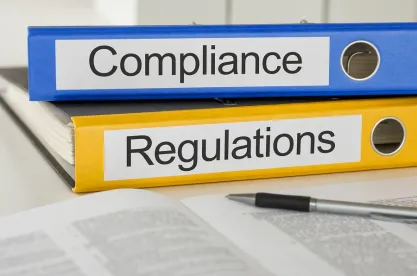Two seemingly unrelated developments in the U.S. Department of Labor (DOL) will affect employers in 2016: The First, the over 100% proposed increases in threshold amounts of salaries that qualify for “salaried exempt” status under the FLSA; The Second, congressionally mandated increases in OSHA penalties at a minimum of 80% by August 1, 2016.
Fair Labor Standards Act Changes
In March of 2014, President Obama directed the DOL to update and modernize the overtime regulations.[1] On July 6, 2015, the Department of Labor issued the proposed regulation changes and published those changes with additional requests for comment in the Federal Register.[2] It has been reported that the proposed changes generated around 270,000 comments, which is the most comments received for a proposed regulation in a long period of time. It has been recently reported by the Department of Labor’s Solicitor General[3] that, due to the amount of comments and the complexity of implementing the regulations, the new regulations may not go in to effect until late 2016.
Employees must be paid overtime, i.e., 1 ½ times their “rate” for any hours over 40 hours worked in a given week. [4] The proposed regulation changes apply to executive, administrative, computer, and professional employees are covered under the Fair Labor Standards Act’s minimum wage and overtime protections. If an employee qualifies, the current salary threshold for exemption is $455 per week (or $23,660 per year). The proposed regulations would set the salary level at 40% of weekly earnings for full-time salaries workers or $921/ week or $47,892 annually based on 2013 data ($50,440 based on 2016 data). The proposed regulations also would increase the total annual compensation required for highly compensated employees to qualify for exemption from $100,000 to 90% of weekly earnings of full-time salaried workers, or $122,148 (2013 data) annually. Finally, the proposed regulations establish a mechanism for automatically updating the salary and compensation levels going forward to ensure they will continue to provide an “accurate test” for exemption. The DOL has suggested either updating the thresholds based on a fixed percentile of earnings for full-time salaried workers or updating the thresholds based on changes in the Consumer Price Index. Regardless of how it is decided to automatically update the thresholds, the DOL proposed publishing the revised salary and compensation levels annually using the most recent data as determined and published by the Bureau of Labor Statistics. The DOL would publish a notice with the new salary level in the Federal Register, as well as on the Wage and Hour Department’s website, at least 60 days prior to the updated rates becoming effective.
The Department of Labor’s goal is to minimize the risk that employees legally entitled to overtime will be subject to misclassification based solely on their salaries.
OSHA Penalty Increases
On November 2, 2015, President Obama signed the Bipartisan Budget Act of 2015 into law.[5] Not widely publicized, but included in that Act is Section 701, “Federal Civil Penalties Inflation Adjustment Act Improvements Act of 2015,” which requires OSHA to increase its civil penalties for the first time since 1990. Presently, the maximum penalty OSHA can assign to the following violations are: Other-Than-Serious – $7,000; Serious – $7,000; Repeat – $70,000; and Willful – $70,000. It is proposed that there will be a one-time “catch-up adjustment” that will happen in 2016, with penalties increasing anywhere from 80% to 150%.
It is required that OSHA increase the penalties through an interim final rulemaking no later than August 1, 2016. Assuming there is the minimum 80% increase, the maximum penalties will be as follows: Other-Than-Serious – $12,600; Serious – $12,600; Repeat – $126,000; and Willful – $126,000. The penalties are expected to reflect the present inflation rate, and then continue to keep pace with the rate of inflation. Presently, the new requirements only apply to states under federal OSHA jurisdiction; however, state plan states are expected to follow the federal changes.
The Assistant Secretary for OSHA, David Michaels, Ph.D., has stated that OSHA is very pleased with the increase because they have felt that OSHA penalties were too low to have the impact that they need to have. [6] OSHA is waiting on the Office of Management and Budget to issue guidance on implementation of the new penalty authority, but this process will need to be advanced based upon the August 2016 deadline.
Conclusions
With the Republican House and Senate’s approval of the 80%-150% increase in OSHA penalties, the first increase since 1990 (the OSH Act became law in 1970), and the “catch-up” of over 100% salary thresholds for exempt employees, employers will face significantly increasing costs by the end of 2016, and with significant bipartisan support.
At this time, employers need to self-audit their occupational safety and health, and wage and hour, programs to ensure compliance in the new higher dollar regulatory atmosphere.
[1] Presidential Memorandum – Updating and Modernizing Overtime Regulations, March 13, 2014 (https://www.whitehouse.gov/the-press-office/2014/03/13/presidential-memorandum-updating-and-modernizing-overtime-regulations)
[2] Federal Register – Defining and Delimiting the Exemptions for Executive, Administrative, Professional, Outside Sales and Computer Employees, July 6, 2015 (https://www.federalregister.gov/articles/2015/07/06/2015-15464/defining-and-delimiting-the-exemptions-for-executive-administrative-professional-outside-sales-and)
[3] http://www.wsj.com/articles/newruleforovertimepaycominglaterthananticipated1447284341
[4] The rules however do not require payment for vacation, sick leave, or other types of pay for not working.
[5] https://www.congress.gov/bill/114th-congress/house-bill/1314
[6] https://www.natlawreview.com/article/osha-gets-authorization-to-boost-penalty-amounts





 />i
/>i

